You’ve probably never heard of Mani Rabadi, but I’ll bet you’ve seen her work before. A behind-the-scenes legend, Mani Rabadi was a fashion designer to the stars. This woman was the final word in costume design for Bollywood films of the 60s and 70s (even continuing to work until Hum Aapke Hain Kaun in 1994)! If you wanted something run-of-the-mill, Mani Rabadi was not your woman. But if a director wanted something to stand out, to set bold trends, and to wow the audience with glamour, she was the only choice. When you see some of the pictures below, you can readily understand how this silent woman in the background transformed the careers of the stars. Her styles turned actors into icons, and made actresses into idols.
Starting her career in a humble toy factory to help pay tuition, and then joining the Indian People’s Theatre Association, Mani got her first break doing Gujarati films before moving to Bollywood. Here is a gallery of her designs from the movies we all love:
An Evening in Paris (1967)
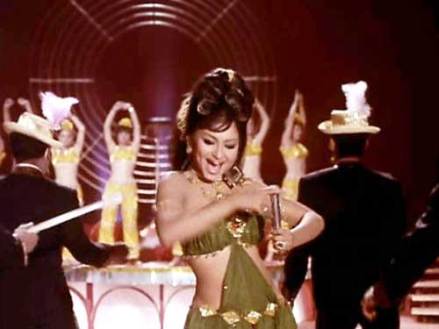
Sharmila actually plays a dual role in the film. The villainous side incidentally always shows her tummy–just to help the audience keep things straight.
Jewel Thief (1967)

I’ve talked a lot about my feelings for Helen in a chicken suit from this film, but this picture definitely deserves one more mention.

Yup, those are cotton balls puffing out of that red sari like polka dots. Just saying, it takes a bold and confident woman to try and pull that off.
Aradhana (1969)

Rajesh Khanna in a blue suit with a hot red turtleneck during “Kora Kaagaz Tha” is the epitome of suave.
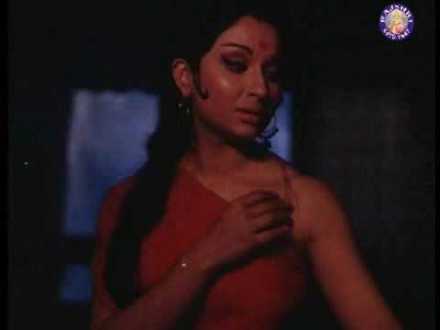
Unarguably the most famous scene from Aradhana, Sharmila Tagore makes a sari out of a flimsy blanket…and the rest is history.
Bobby (1973)
Farz (1961)

Oh, those tight white pants that made you who you were. It’s no wonder Jeetendra was nicknamed “Jumping Jack”!
Prince (1969)
Kati Patang (1970)
Amar Akbar Anthony (1979)
Don (1978)
The bottom line here is, could Jeetendra have seized Bombay by storm without his famous tight white pants? Could Dimple Kapadia have shot to stardom without costumes that only covered half of the minimum required? Doubtful. Sure, you might not want to be caught dead in a ditch with many of these outfits, but her work is so diverse, eye-catching, and unpredictable: Mani Rabadi is unarguably genius. Next time you watch one of these hits, consider the people behind the scenes and appreciate their fluid artistry hidden within the films.
-Mrs. 55

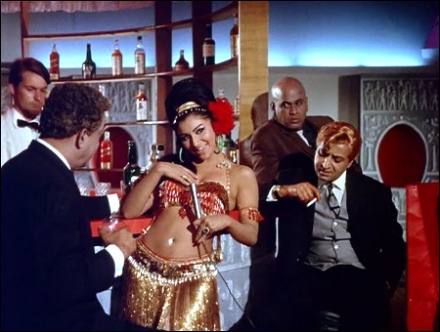





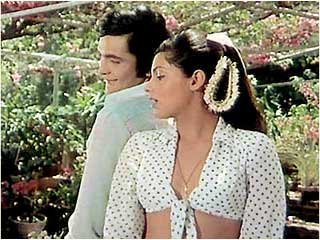
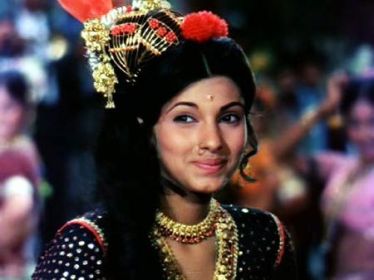

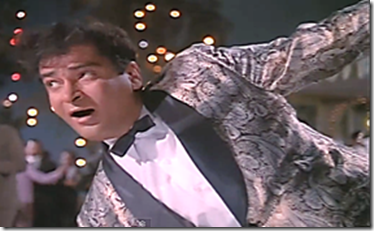
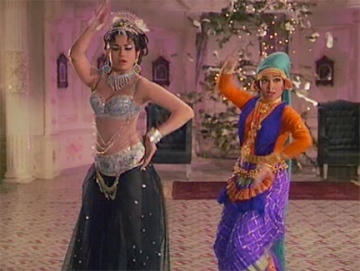
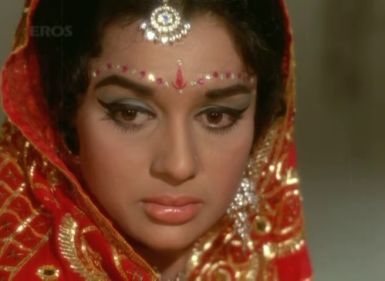

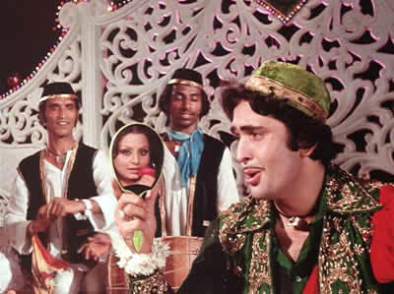



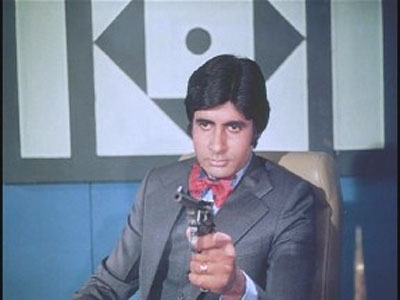



Lovely collection- thanks for bringing this to light. This aspect of Bollywood is often taken for granted but its nice to know who is responsible for the over the top stuff (pardon the pun).
BTW, I think that what Rajesh Khanna was wearing in the Mere Sapon Ki Rani song is best described as a Nepali Topi (hat) – this is the national headgear of Nepal but often considered fashionable in bordering Indian states- rather than a “Nehru hat”, which has a lower profile, is longer and typically white. Also, as an aside, while Nehru is most often associated with this, the headgear he wore is really called a Gandhi cap after the person who really introduced this to Indian Congress leaders.
Haha thank you for the insightful comments! The caption below Rajesh Khanna’s hat has been fixed appropriately 🙂
I laughed through all of your commentary. However costume design is as you mentioned very critical to Hindi films and adds tremendously to whether an actor’s career will be a success or not. That and their dancing/lip syncing ability of course. She and the backup singers, who we know have received acclaim for their work, are truly what can make or break an actor/actress in Hindi/films
This blog post is great. It gives merit to those whose contribution is often ignored but who yet put a tremendous effort into the success and appreciation of a set. I would like to learn more about other people who have important roles behind the scenes.
Commendable collection & effort, Mr & Mrs 55 🙂
It made for very interesting & insightful reading.
Mani Rabadi’s name was often seen in the credits, but only recently did I realise that she is Shammi’s sister. Vyjayantimala’s red with white cotton puff saree is iconic & truly one of a never-to-be-forgotten kind.
Can’t say I like Rajesh Kahanna’s clothes, in general, altho’ he did manage to carry them off fairly well.
btw, the dancer in ‘Kati Patang’ is Bindu, not Aruna Irani.
Any idea about the current status of Mani Rabadi? Her last work appears to be “Hum Aapke Hain Kaun” in 1994. Is she still around, like her octagenarian sister?
Keep up the good work 🙂
Thank you! Haha I’m glad you too appreciate the red and white cotton puff saari from Jewel Thief–it’s one of my all-time favorite crazy costumes 🙂
From what I understand, Mani Rabadi is still around, but not doing commercial work anymore. Her last feature film does indeed seem to be Hum Aapke Hain Kaun, which itself had so many iconic costumes (who can forget Madhuri’s green silk outfit in “Joothe Dedo”?!)
And thanks for the catch about Bindu in Kati Patang–good call!
Pingback: Retro Bollywood Hairstyles from Caravan (1971): Wigs, Teasing, and More Wigs « Mr. & Mrs. 55 – Classic Bollywood Revisited!
Pingback: Meera Bhajans as Film Songs: The Saintlier Side of Bollywood | Mr. & Mrs. 55 - Classic Bollywood Revisited!
Pingback: naya nasha, 1973 – smoking hot or pot? | banno, dhanno and teja in bumm-bumm-bhole-land
Pingback: Minoo Purushottam: Appreciation from a Former Student | Mr. & Mrs. 55 - Classic Bollywood Revisited!
Lot’s off love mani Ben rabari